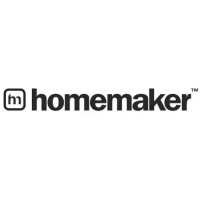
Do you have a question about the Homemaker HBF110G and is the answer not in the manual?
Guidance on safely disposing of old refrigerators and environmentally friendly disposal of new packaging materials.
Information for correct assembly, operation, and maintenance, emphasizing user guidance and manufacturer responsibility.
Covers proper grounding, unplugging, qualified repairs, handling high-proof beverages, and safe appliance usage.
Warns against storing explosive substances and damaging refrigerant lines, highlighting potential eye injury from leaks.
Guidance on ventilation, avoiding heat sources, cooling food before storage, minimizing door openings, and temperature adjustment.
Instructions on placing the appliance on a level surface, ensuring proper earthing, and initial cleaning before use.
Advice on adjusting inner temperature based on ambient conditions and food load, with notes on fast refrigeration.
Explanation of temperature variations within the compartment, noting the coldest and warmest areas.
Rules for storing food, handling the appliance, and safety precautions during operation and unplugging.
Guidance on unplugging, cleaning, drying, and leaving the door open for storage to prevent mildew.
Explanation of automatic defrosting and warning against using sharp instruments to remove ice.
Instructions on safely moving the appliance, including unplugging and emptying the water tray.
Steps for power failures: do not defrost, adjust thermostat, and restore settings.
Addresses common causes for lack of refrigeration, such as power connection or fuse issues.
Explains reasons for the inner temperature not being cold enough, including settings, overfilling, and heat sources.
Discusses causes of unusual noises, including leveling and normal compressor operations.
Explains that wet outer surfaces can occur during high humidity periods and how to dry them.
Covers causes of wet inner surfaces like frequent door openings or high water content produce.